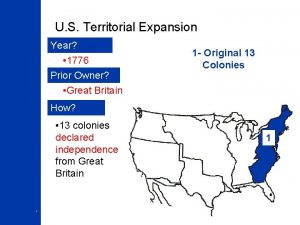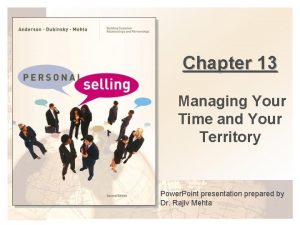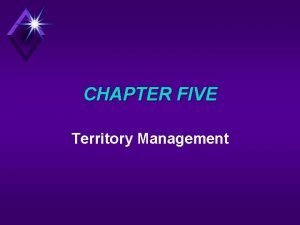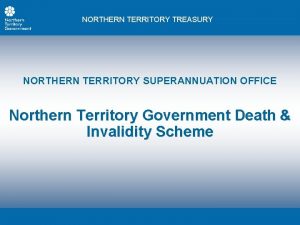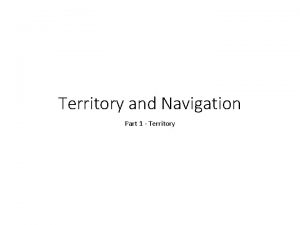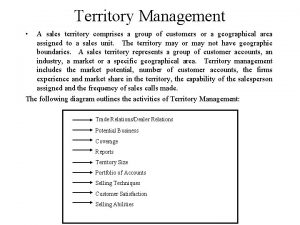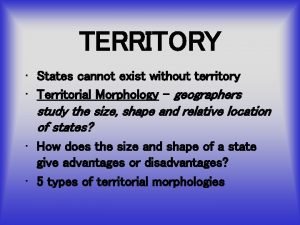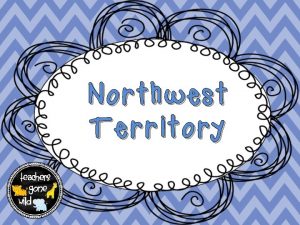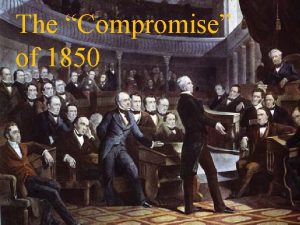FROM TRADE TO TERRITORY CLASSVIII S Sc PREPARED












- Slides: 12

FROM TRADE TO TERRITORY CLASS-VIII (S. Sc. ) PREPARED BY : K. K. PRASAD TGT ( S. Sc. ) K. V. DANAPUR CANTT. ( F. S. ) K. K. PRASAD, TGT S. Sc.

LEARNING OBJECTIVES The students will know about the past history of India. They will know about the arrival of the East India Company to India. They will understand the different policies adopted by the British to annex Indian territories. They will recognize the impact of British rule over India. K. K. PRASAD, TGT S. Sc.

TRADING HISTORY Vasco-da-Gama discovered sea route from Europe to India in 1498. East India came to India in 1600 AD. First English Factory was established in India on the bank of river Hugli in 1651 in then Bengal. East India company acquired Farman (Right to free trade)from Aurangzeb. After the death of Aurangzeb the Nawab of Bengal (Sirajuddaulah) refused the company to make free trade. K. K. PRASAD, TGT S. Sc.

FOUNDATION OF TERRITORY q After the refusal of Sirajuddaulah for free trade by the Company , a dispute started between the Nawab of Bengal and the Company. q There were also other causes for disputes, like –fortification by the company, interference in the internal affairs of the Nawab by the Company, fortification by the Company etc. q In 1757 the Company fought a battle against Sirajuddaulah named as battle of Plassey. q With the conspiracy, Sirajuddaulah lost the battle and Mir Zafar (Nawab’s military commander) was made nawab. q In 1764 an another battle was fought between Nawab of Bengal (Mir Quassim) and the Company, namely Battle of Buxer. q The Nawab of Bengal lost the battle and the Company acquired Diwani. q Thus the Company became a territory holder from a trader. K. K. PRASAD, TGT S. Sc.

EXPANSION OF TERRITORY Ø After winning the battle of Plassey and Buxer the Company adopted several policies to expand its territory and rule over India. Ø Somewhere the Company started direct military action for annexation , like in Mysore. Ø The British fought four wars with Mysore and finally captured it after the death of Tipu Sultan. Ø The British also fought several wars with Marathas. Ø The other policy the Company adopted for territorial expansion was Subsidiary Alliance. Ø The Doctrine of Lapse introduced by Lord Dalhousie in 1848 was a tool for territorial expansion. K. K. PRASAD, TGT S. Sc.

PRINCELY ESTATES K. K. PRASAD, TGT S. Sc.

SUBSIDIARY ALLIANCE It was a system framed by Lord Wellesley to annex Indian territories. Any Indian ruler could join subsidiary alliance after which could provide him protection by the Company Forces. The Indian ruler who accepted this system had to pay the Company for the maintenance of the Force. After accepting the Subsidiary Alliance, the Indian ruler lost it’s sovereignty. The Nizam of Hyderabad and Nawab of Awadh were the Indian rulers who entered into this alliance. K. K. PRASAD, TGT S. Sc.

LORD WELLESLEY- INTRODUCED SUBSIDIARY ALLIANCE K. K. PRASAD, TGT S. Sc.

DOCTRINE OF LAPSE It was an annexation policy introduced by Lord Dalhousie in 1848. According to this policy, if an Indian ruler died without a natural male heir (successor), his princely estate would become the part of the British ( Company ) territory. This policy was against then Hindu law, where the rulers having no natural male successor could have adopted son as successor. The princely estates of Satara(1848), Sambalpur, Nagpur and Jhansi (1854), Tore and Arcot (1855), Udaipur, Awadh(1856)were annexed by the Company under this Doctrine of Lapse. K. K. PRASAD, TGT S. Sc.

LORD DALHOUSIE- INTRODUCED DOCTRINE OF LAPSE K. K. PRASAD, TGT S. Sc.

HOME ASSGNMENTS 1) Match the following : a) Tipu Sultan i)Doctrine of Lapse b) Lord Dalhousie ii) Nawab of Bengal c) Lord Wellesley iii) Ruler of Mysore d) Sirajuddaulah iv) Subsidiary Alliance e) Haider Ali v) Tiger of Mysore 2) Describe any three reasons of battle of Plassey. 3) When was the battle of Buxer fought and what was it’s impact? 4) Write short notes on : i) Subsidiary Alliance ii) Doctrine of Lapse 5)Mark the following on the outline map of India : i) Mysore ii) Awadh iii) Jhansi iv) Nagpur K. K. PRASAD, TGT S. Sc.

THANKS FOR LEARNING PREPARED BY : K. K. PRASAD TGT (S. Sc. ) K. V. DANAPUR CANTT. (F. S. ) K. K. PRASAD, TGT S. Sc.
 Fair trade not free trade
Fair trade not free trade Trade diversion and trade creation
Trade diversion and trade creation Trade diversion and trade creation
Trade diversion and trade creation Which is the most enduring free trade area in the world?
Which is the most enduring free trade area in the world? Liner vs tramp
Liner vs tramp The trade in the trade-to-gdp ratio
The trade in the trade-to-gdp ratio What was the triangular trade
What was the triangular trade Trade diversion and trade creation
Trade diversion and trade creation Previous owner of oregon territory
Previous owner of oregon territory Florida cession prior owner of territory
Florida cession prior owner of territory Clover leaf routing plan
Clover leaf routing plan Chronomics meaning
Chronomics meaning Peninsula north america
Peninsula north america









